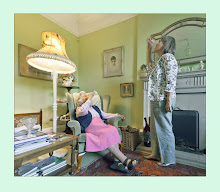The photographer, Henri Cartier-Bresson, used to be very strict about composing within the frame; the image was not to be cropped since it was composed within a particular framework of exact proportions. To ignore this might be to ruin the original conception of the photograph.
There was however, an ulterior motive here. While the frame did constitute a means of ensuring consistency in his working method, it also meant that editors would have to respect his compositions and not make their own interpretations as this might alter the meaning of the photograph from its' original intent.
I do not adhere to the method of "framing" photographs when trying to capture images because often, in wildlife, one is just trying to get an image and may not have the option of framing in regards to the proportions of the image. This is probably going to be something one can do better at a later stage.
There was however, an ulterior motive here. While the frame did constitute a means of ensuring consistency in his working method, it also meant that editors would have to respect his compositions and not make their own interpretations as this might alter the meaning of the photograph from its' original intent.
I do not adhere to the method of "framing" photographs when trying to capture images because often, in wildlife, one is just trying to get an image and may not have the option of framing in regards to the proportions of the image. This is probably going to be something one can do better at a later stage.

